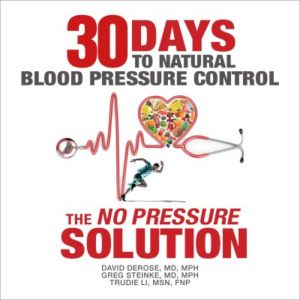Wondering about Andropause?
Considerations for Low Testosterone Levels in Middle-Aged and Older Men
Note: The material is designed to inform and educate. It represents the opinions of the author based on his understanding of current medical research and is not intended to be viewed as a replacement for medical evaluation, advice, diagnosis, or treatment. If the information in this handout disagrees with personal information provided by your health care professionals, please follow their counsel.
Overview
Beginning in a man’s early thirties, his testosterone levels typically decrease steadily. Some interpret this finding—along with other changes in male health over time—as evidence for a “male menopause” or andropause. As a result, even some health professionals are advocating the use of testosterone replacement to address the decline in male sex hormones that occurs with aging. However, despite claims that testosterone replacement therapy may improve certain health endpoints (including quality of life beyond middle age) these claims are as yet speculative.
What Does Testosterone Measurement Tell Us?
Although most lab tests measure total testosterone in the blood, free testosterone (unattached to any “carriers” in the body) is probably the active form of this hormone. One of the main carriers of testosterone, sex hormone binding globulin (SHBG), tends to rise with age, further decreasing the amount of free testosterone available to the body.
Therefore, “normal” total testosterone levels vary based on one’s age. Although levels tend to be lower in older men, there is considerable debate as to whether these lower levels are dangerous, neutral, or even beneficial in some respects. Further complicating the picture is that testosterone levels can fluctuate over weeks and months. Therefore, many experts recommend having at least two testosterone measurements several weeks apart before embarking on a treatment regimen—especially if the initial value is close to the normal range.
Testosterone should be measured in the morning, preferably between 6 and 8 AM. The reason for this early morning testing is that testosterone levels tend to be highest at this time of day. This is almost always the case in young healthy men, with age the daily fluctuation in testosterone levels may not be as marked.
What are Normal Testosterone Blood Values?
These vary from lab to lab, but generally are as follows:
- Conventional units used in the U.S: 300 – 1000 ng/dl (3 – 10 ng/mL)
- International (S.I.) units: 10 – 35 nmol/L (nM/L)
- Converting between unit systems: divide U.S. units by 28.84 to get SI units
- Note: Some researchers use a cut off of less than 8.7 nM/L (250 ng/dL) as indicating significantly low testosterone in men over 60. Others do not feel deficiency is clear cut unless levels are below 7.0 nmol/L (200 ng/dL).
Other Considerations in Testing
The brain’s hypothalamus and pituitary gland exercise some control over testosterone levels. If these regions are working properly, they will respond to low testosterone production by increasing output of lutinizing hormone (LH). However, aging also tends to affect the pituitary and hypothalamus. Consequently, LH levels may not rise appropriately even in the face of testosterone deficiency.
Nonetheless, measuring one’s LH level can be helpful. Low levels may indicate relatively rare conditions like a pituitary or brain problem. Any man with a testosterone level below 7.0 nmol/L (200 ng/dL) should, at a minimum, have testing of LH and prolactin (another pituitary hormone) to evaluate for other potentially serious diseases.
One particularly noteworthy cause of pituitary problems—and resultant low testosterone levels—is a condition of iron excess known as hemochromatosis.
Other Factors Influencing Testosterone Levels
Testosterone levels can be depressed by the following:
- Acute illness
- Chronic illness (especially noteworthy are lung diseases and diabetes)
- Obesity
- Certain medications (including: mental health/neurologic medications; the heart medication, digoxin; and narcotic pain relievers)
- Excessive alcohol intake
- Cigarette smoking (although in some people, smoking may raise testosterone)
Lifestyle factors that may raise testosterone levels include:
- Short-term weight training exercise
- Weight loss
In men with low testosterone levels and no explanation other than aging, what might testosterone replacement do?
Potential Benefits of Testosterone Replacement
- Improved insulin function (decreased insulin resistance)
- Decreased body fat mass
- Increased muscle mass and strength
- Improved bone health
- although may not provide benefit unless marked androgen deficiency exists
- vitamin D and calcium alone may provide similar benefits without testosterone
- liberal intake of phytoestrogens (e.g. soybeans) may theoretically help to prevent low-testosterone-related bone thinning as estrogenic compounds also help male bone health
- Increased libido and sexual functioning (probably only in men with the lowest testosterone levels; testosterone would not be expected to help impotence that is related to nerve or circulatory factors)
- Potential benefits in men with angina who are testosterone deficient
- Possible benefits in depression and mental functioning, but data at present are unconvincing
Potential Dangers of Testosterone Replacement
- Prostate problems—including: increased PSA levels, prostate enlargement, and possible increased risk of prostate cancer
- Decreases in the good cholesterol, HDL (may be offset to some extent by decreases in LDL)
- Elevation in hemoglobin (5 – 20% increases are common) that may contribute to a greater likelihood of blood clotting
- Worsening of sleep apnea (a condition where a person stops breathing during sleep)
Conclusion
If a person has deficient androgen production due to disease of the testicles or pituitary, treatment is warranted and is almost always beneficial.
On the other hand, when low testosterone levels are due solely to aging, the picture is less clear. Although men with profound testosterone depression may benefit from replacement, we should not forget the lessons learned from hormone replacement therapy in women. Namely, restoring sex hormone levels to youthful levels may do more harm than good—unless clearly indicated.
Primary References:
“Age-Related Changes in Testosterone and the Role of Replacement Therapy in Older Men”
Clinical Endocrinology 60(6):653-670, 2004.
“Andropause” in Williams Textbook of Endocrinology, 10th ed., 2003
Originally prepared by David J. DeRose, MD, MPH on March 3, 2005; revised: December 5, 2005.




